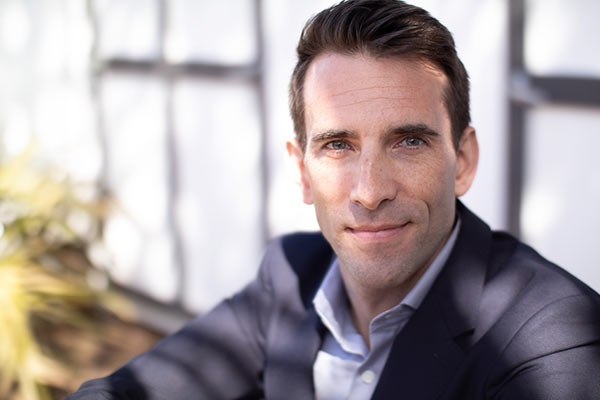As a child in Chester, Pa., Nathaniel Crews was fascinated with engineering, gravitating toward mathematics. A self-proclaimed “early nerd,” Nathaniel saw first-hand the birth and adoption of the computer age. And that fascination kept with him as he began his project manager career.
At General Electric Aerospace (part of Lockheed Martin), he recalls doing projects on punch cards and floppy disks and calculating algorithms on a sheet of paper, hoping the math was done correctly. He then parlayed that work experience to program manager roles in the commercial sector, specifically at IBM Global Business Services; Honeywell, Transportation and Power Systems; and Toyota Financial Services.
After 20 years in that sector, Nathaniel joined startup Helio LLC that, “believe it or not,” Nathaniel says with a laugh, “was trying to get a social media phone that had MySpace on it!”
It was during this time that the instructor bug bit. “I was also bringing in classes for the employees to learn how to be a better project manager,” Nathaniel describes. “The class was for those who were good at developing projects, but not so much at running the projects and keeping them on track.”
And the desire to teach project management has stayed with him ever since—and mostly within the UC system. Since 2016, Nathaniel has been an esteemed member of our instructor community!
Let’s get to know Nathaniel a bit more:
You’ve been teaching for quite a while.
In between teaching full time, I’ve had short- and long-term consulting engagements, but I’ve done a lot of teaching.
For 10 to 15 years, I worked for a company in New York called International Institute for Learning. After that, I began migrating to the university level. I started teaching project management–related courses at UC Irvine. And then I started teaching a few project management online courses at UCLA. I did that for a number of years. I also teach Agile Project Management and System Engineering courses at CalTech’s Center for Technology and Management Education (CTME) in Pasadena, California. And then I received a job opportunity at UC Berkeley Extension. I taught in-person classes in Berkeley and San Francisco by flying or driving up there. I even taught the class on weekends.
That’s quite the commitment to teach at Berkeley!
I wanted to be an instructor or knowledge teacher in project management throughout California. Being at Berkeley was a good home for me. Being with Berkeley and teaching in SoCal allows me to be that traveling-style instructor, that is:
What is it like teaching adult learners?
Adult learners are different; they are show-me learners. You have to draw from your own experiences. You have to be a storyteller of situations that you have had and be comfortable doing so. You can’t come across as an instructor saying everything I did was pristine and perfect. You need to show them the flaws, how you struggled, how you succeeded, the mistakes you made along the way and how you recovered from those.
Students also want to know about statistics—what are my competitors doing? It keeps me on my toes; I do a lot of studying and continue learning to answer that question.
How do you incorporate your real-world experience into the classroom?
I try to incorporate a “Mr. Miyagi” technique, “wax on, wax off.” I introduce real-world experiences depending on the class and lesson being taught.
In one of my classes, we built a version of a 3-D Jurassic Park Island from a Scrum standpoint: from beginning to end so you can get real-world experience. It added realism and fun to the class!
You want to make the learning fun and not drudgery. Give the students the opportunity to be the author of what they want to do.
How would you describe your teaching style?
One thing I do during zoom sessions is I open up a blank white board, and I say, “You are my customers here. What are you expecting to learn from this lesson?”
Even through this pandemic, there's been some extraordinary work that’s helped us through this transition migration.
I’m Mr. Gadget. I'm always trying to figure out ways to develop and incorporate new techniques into my class. I try to keep it refreshing, hands on and fun!
MURAL collaborative board is an advanced tool that allows students to engage with one another, and I really like it. I tend to have students who ask a lot of questions and push me as an instructor, so I love that.
I also make sure to tell my students that after the course ends, they can count on me as a resource. A lot of my students have taken that opportunity to reach out to me. I have a lot of my past students on LinkedIn and they let me know when they pass exams or things of that nature. They update me with their progress and successes.
Tell me about your current work.
Because work has slowed down, I am now focusing on personal coaching. Since May, I have been taking a course on life coaching/personal coaching and executive coaching. I’m getting enough training sessions and gearing up for next year.
Are there any advances or new trends in project management that you’re excited about?
I am excited about one trend: the sequential way of doing projects. It’s the blending of both learning how to run Agile and waterfall projects. We are learning there are situations where waterfall will work, Agile will work or both, and I see how it's being taught now in a wonderful way of understanding while advancing our skills and deepening our knowledge.
We are blending these two techniques and teaching students how to be the new project managers of the future.



